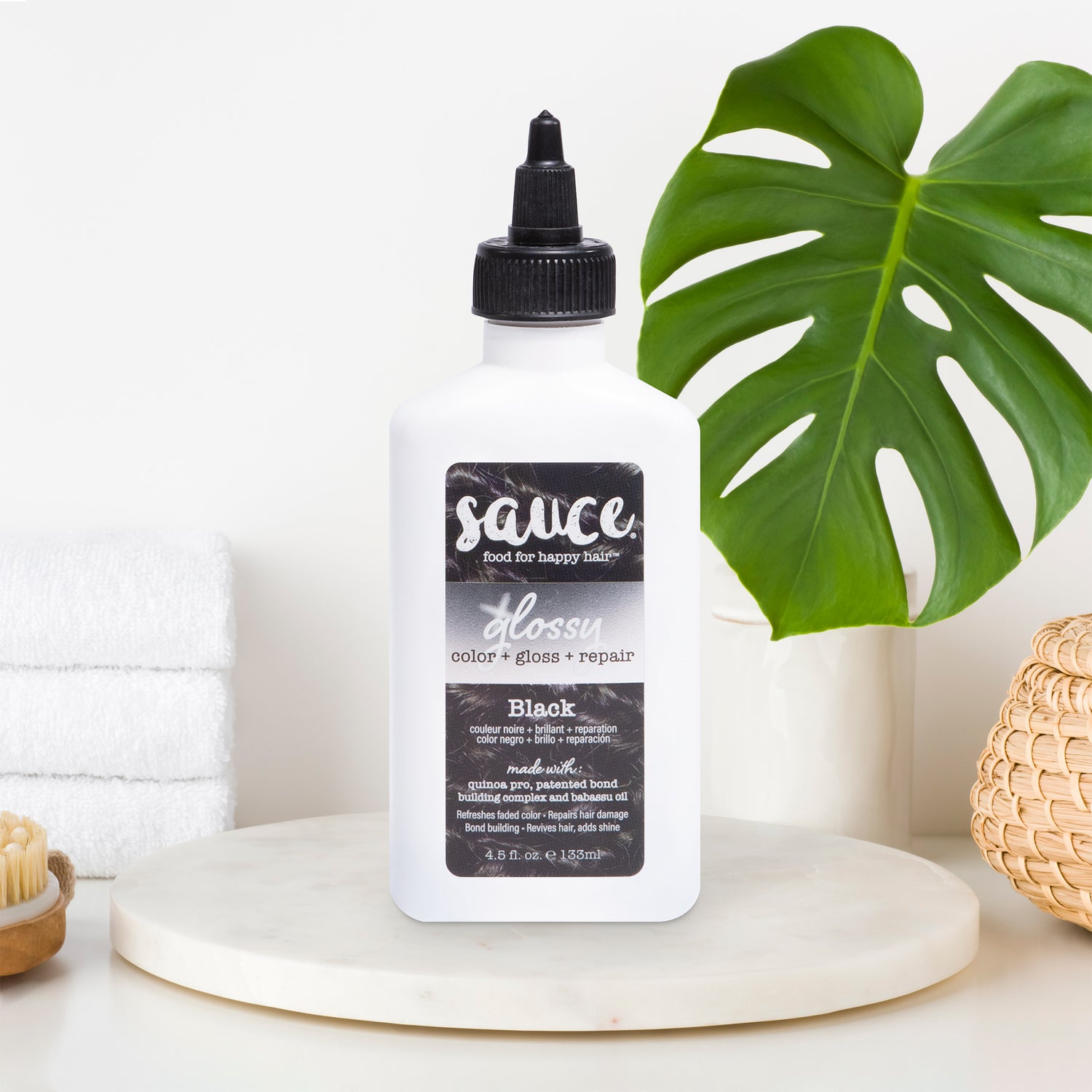Are Sulfates Bad for Your Hair?
Your best friend swore off of them years ago; your favorite natural health store has straight up banned them; and your colorist speaks of them as if they were spun from the devil himself. We’re talking about sulfates, salt-based molecules that are traditionally found in hair and skincare products such as shampoos, face washes, as well as toothpastes and detergents. As you’ve probably already noticed, these ingredients have garnered quite the bad reputation over the past decade or so.
While there’s a strong anti-sulfate movement at the moment, experts say there has also been a lot of confusion and even miscommunication surrounding these ingredients. Here at Sauce Beauty, we know haircare. Sauce Beauty founder Andy Rah has been creating lines for top haircare companies for over a decade. So, we’ve gone straight to the sauce, er, source to demystify some of the beauty world’s most notorious ingredients.
So, what exactly are sulfates?
Sulfates are cleansing ingredients that make your products foam. (You may also hear them referred to as surfactants, a broader term used to categorize cleansing agents.) That’s why you typically find them in shampoos, cleansers, laundry detergents, and toothpastes—products that you can work into a rich lather, which makes us feel, well, clean. In a shampoo formula, “sulfates or any surfactant helps cleanse the hair by allowing the active ingredients in their shampoo to do their job,” says Rah. To get into a little bit of the science behind them: Sulfates are made from sulfur-containing salts. They attract both water and oil, which is why they can effectively clean your hair (or skin, teeth, and clothes). As you wash your hair, sulfates grab onto all the dirt, oil, and product buildup in your strands and scalp, and then carry them out of your hair (and down the drain) when you rinse clean with water.
Some of the most commonly used sulfates in shampoos are sodium lauryl sulfate (SLS) or sodium laureth sulfate (SLES). You’ll find these on the ingredient list on the back of a shampoo bottle, usually near the top of the list.
Are all sulfates bad for you?
In a word: no, says Rah. “They’re not all bad.” You may have heard rumors that sulfates are bad for your health, but those claims have no evidence to support them, says Rah. “While some people think they can cause cancer or other health concerns, this has never been proven,” he says. Rah also notes that sulfates aren’t flagged as known or even possible carcinogens. They are, however, possible irritants—like, say, if you were to get a sulfate-containing product in your eye, it can cause irritation. But research has not shown that sulfates are not harmful to your general health.
But there are some downsides to the bubbles, at least in regard to your hair. Too many harsh sulfates in a shampoo can strip your hair and scalp of its natural oils, making it feel drier. And in some cases, sulfates can cause scalp irritation, though Rah points out that this is rare. What about those claims that sulfates can fade hair color? Here’s the thing: All shampoos, even just rinsing with plain old water, can cause dyed hair color fade to some degree. While it’s true that sulfates (and other surfactants) may speed up the process, Rah says it isn’t always the sulfate itself doing the stripping or fading. It’s how the sulfate is formulated in the product—how much of it is being used and what the ratio of it is to other surfactants, he explains. If you strike the right balance, you may have less stripping.
Why are Sauce Beauty products sulfate-free?
Sauce Beauty has opted to err on the side of safety and not include the controversial surfactants in their shampoos, especially since consumers have some big concerns about them. “We want women to have peace of mind if SLS and SLES sulfates are on their ‘no-no’ list,” says Rah. “Plus, it’s just as easy to make great formulas without those ingredients,” he says. Instead of SLS and SLES, Sauce Beauty shampoos relies on a gentler surfactant called sodium (C14-16) olefin sulfonate, which is derived from coconut. It’s an ideal replacement because it still lathers up (which is good, because we all know it’s the bubbles that make us feel clean), but won’t strip hair or cause scalp irritation. Despite the sulfate-sounding name, and the fact that sodium olefin sulfonate also contains salt, it’s not actually a sulfate. Other mild cleansers in Sauce Beauty shampoos include cocomidopropyl betaine and Sodium Cocoyl Glycinate, also derived from coconut, and Zaya Mays Kernel, the inner part of a corn kernel that gently cleans hair.
So, which Sauce Beauty products contain these gentle, yet effective sulfate-free surfactants? Check out these options below.
Island Moisturizing Shampoo
This tropical-inspired shampoo is formulated with nourishing coconut milk, exotic jasmine, and soothing honey. It’s designed to gently cleanse fine to medium hair texture, while the honey and other hydrating ingredients keep hair soft and lush, but never weighed down.
Intense Repair Chimichurri Mint Tingle Shampoo
In addition to the multiple sulfate-free surfactants that deep clean your hair, this shampoo also contains scalp-tingling menthol—key for clearing dead-skin buildup on your scalp. It’s also contains mega-moisturizers such as glycerin to hydrate dry, damaged, and highly processed hair.

